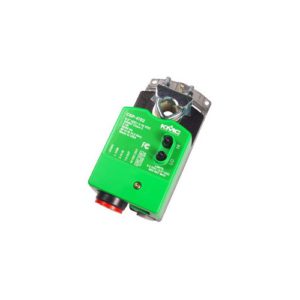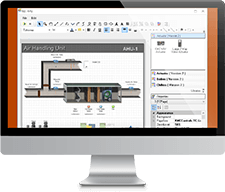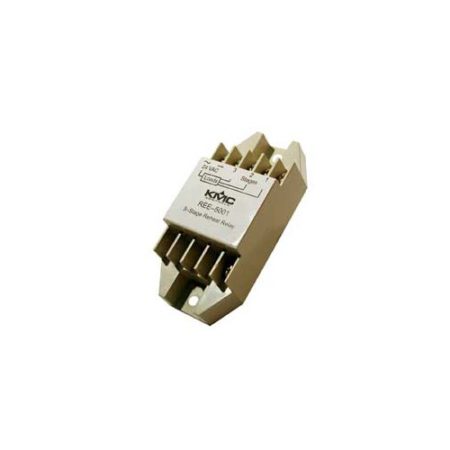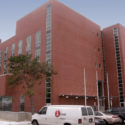Digital & Analog Controls
Electronic building controls can be digital or analog. A digital control provides two-way communication between the controller and the front-end software of a building management or automation system. This allows a facility manager to view data collected by each controller and change its settings from a remote location. Both of these features are huge advantages over pneumatic controls, which provide little to no data.
Analog controls can often accept and manage a setpoint for a room attribute, such as a room temperature, but they do not offer two-way communication and have limited remote monitoring capabilities. However, they play an important role in balancing functionality and cost when architecting a building management system.
DDC Controls
When digital electronic controls are networked together into a central computer system, they become a DDC (Direct Digital Control) system. In DDC controls, information such as temperature, humidity, airflow, access controls, and more, is gathered from the system’s various sensors and funneled to central software, which for KMC is most often via BACnet. (For an overview, see our “What is BACnet?” video.)
While some DDC control hardware only interfaces with the software for setup and configuration, the more desirable option is using software to manage DDC controls by programming settings or tripping an alarm for manual adjustment or troubleshooting when levels exceed set parameters. A graphic-driven software interface like KMC TotalControlTM automation software combines services to collect, store, and route data between the DDC hardware and an operator interface or workstation. Or harness the power of Niagara with KMC Workbench!
DAT / LAT Electronic Controls
DAT stands for Discharge Air Temperature, also known as LAT or Leaving Air Temperature. An analog electronic controller-actuator senses the DAT and measures it against a setpoint. If the DAT goes above or below that setpoint, it sends a signal to a networked actuator to mechanically adjust its valve to control the temperature. Used primarily in fan coil and unit ventilator applications, DAT/LAT controls can be configured for heating or cooling.
Relay & Voltage Controllers
Relay controls are basic electronic controls that function as switches, turning on or off high-voltage components such as blower motors, compressors, and condenser fans. Electronic relay controls are available with many additional functions and features to meet a wide variety of system requirements. For example, relay controls can function as voltage controllers to regulate inconsistent AC power, or be used to gauge system status and electrical loads.
Transducers & Transmitters
Transducers are electronic controls that convert one kind of energy into another. In building automation, transducers may convert a pneumatic pressure signal into voltage or current signals (or vice versa) or voltage signals into current signals (or vice versa).
Transmitters are similar to transducers. They take a relatively small, passive sensor signal—such as the resistance of a thermistor in response to a temperature—and convert it into an active voltage (e.g., 0–5 VDC) or active current (e.g., 4–20 mA). Using a transmitter to boost a signal this way allows greater distance between the sensor and the controller.
 Cart
Cart




 The Building Geniuses® at KMC Controls are all about delivering smart, efficient systems that maximize your budget over the long haul. When you’re ready talk about crafting the best system for your needs,
The Building Geniuses® at KMC Controls are all about delivering smart, efficient systems that maximize your budget over the long haul. When you’re ready talk about crafting the best system for your needs,